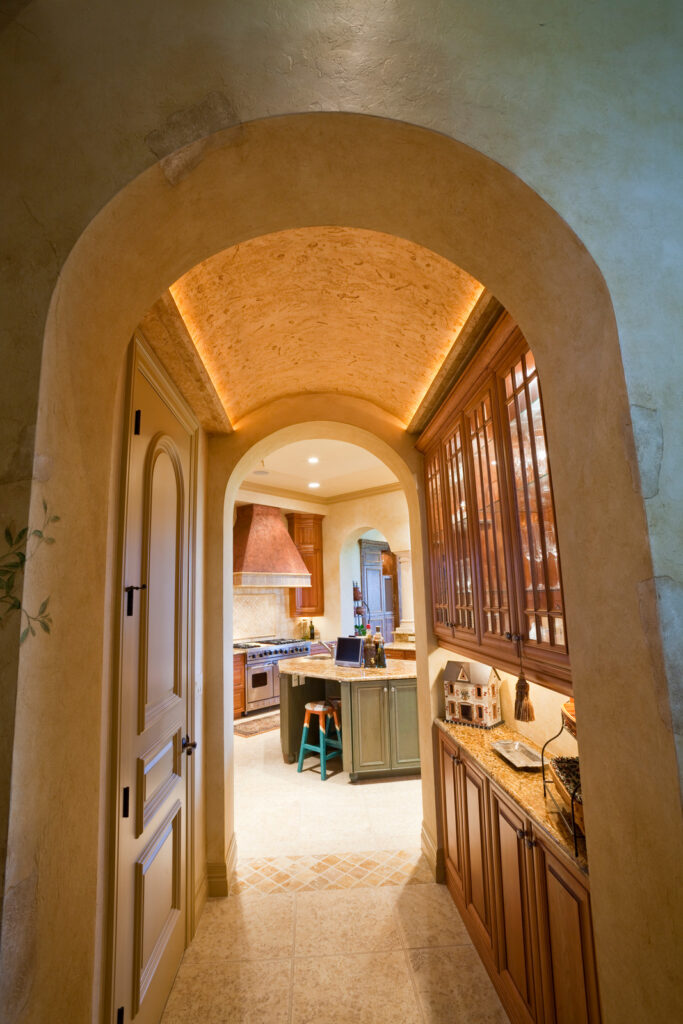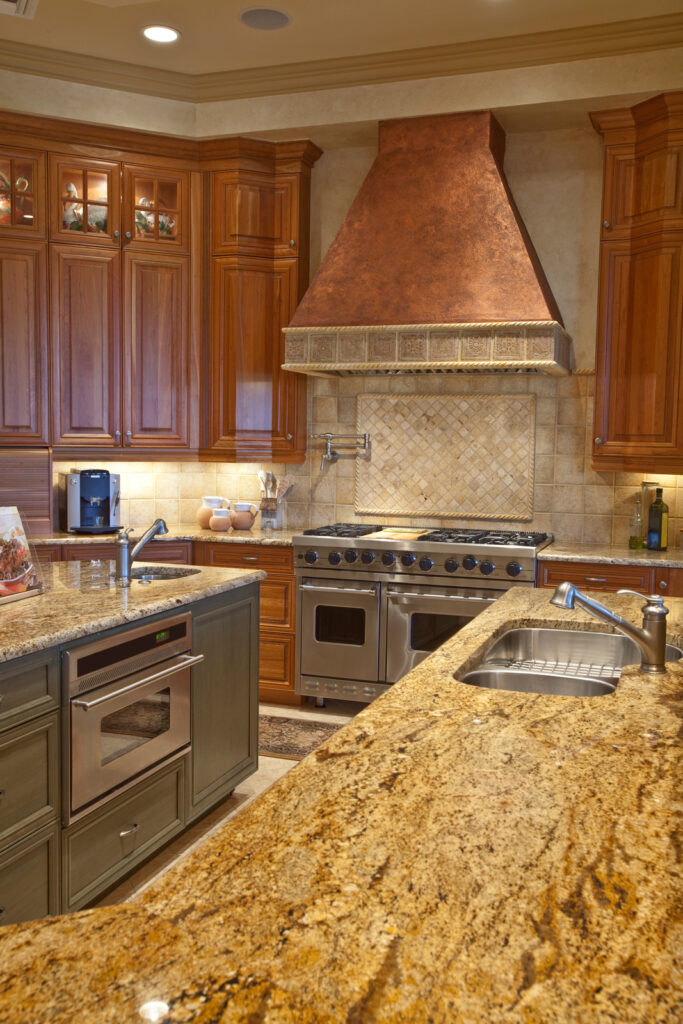Mediterranean Tuscan kitchen design is all about creating a warm, inviting space that reflects the rustic elegance of the Italian countryside. With its rich textures, earthy colors, and timeless materials, this style can transform your kitchen into a beautiful and functional heart of the home. Here are seven secrets to help you achieve the perfect Mediterranean Tuscan kitchen design.
Secret 1: Embrace Natural Materials
The essence of Tuscan design lies in its use of natural materials. These elements bring authenticity and warmth to the space, mimicking the rustic charm of Italian farmhouses.
- Stone Countertops: Opt for granite, marble, or soapstone countertops. These materials are durable and age beautifully, adding character over time.
- Terracotta Tiles: Use terracotta tiles for flooring or backsplashes. Their rich, earthy tones and natural texture create an inviting atmosphere.
- Wooden Beams: Exposed wooden beams on the ceiling add a touch of rustic charm. Reclaimed wood with visible grain and knots works best for an authentic look.
Tips: Source materials from reputable suppliers who specialize in natural and reclaimed materials. Consider visiting architectural salvage yards for unique finds.
Secret 2: Incorporate Warm Color Palettes
Tuscan kitchens are known for their warm and earthy color schemes. These colors reflect the sun-soaked landscape of Tuscany.
- Walls and Cabinetry: Use warm yellows, rich reds, burnt oranges, and deep browns. These colors create a cozy and inviting environment.
- Accents and Decor: Complement the primary color palette with olive greens, soft blues, and natural whites.
Tips: When painting, use matte or eggshell finishes to enhance the rustic feel. Consider faux painting techniques like sponging or rag rolling for added texture.
Secret 3: Use Architectural Details
Incorporating architectural elements can significantly enhance your kitchen’s Tuscan vibe.
- Arched Doorways: Arched doorways and windows add an old-world charm. If structural changes are possible, consider adding these features.
- Exposed Beams: Wooden beams add depth and character to the ceiling. They can be stained or painted to match your overall color scheme.
- Plastered Walls: Textured plastered walls create a soft, aged look. This can be achieved through techniques like Venetian plaster or simple hand-applied stucco.
Tips: When renovating, consult with a professional to ensure that structural modifications are feasible and safe.
Secret 4: Select Rustic and Aged Finishes
Rustic and aged finishes are key to achieving an authentic Tuscan kitchen design.
- Distressed Wood: Choose distressed or reclaimed wood for cabinets, flooring, and furniture. The imperfections add a sense of history and charm.
- Patina on Metals: Incorporate metals with a natural patina, such as aged copper or bronze, for sinks, faucets, and hardware.
- Weathered Stone: Use stone with a naturally weathered appearance for countertops or accent walls.
Tips: For a DIY approach, you can create distressed finishes using sandpaper or specialized paint techniques.
Secret 5: Integrate Wrought Iron Accents
Wrought iron adds an elegant yet rustic touch to Tuscan kitchens.
- Light Fixtures: Choose wrought iron chandeliers, sconces, or pendant lights to illuminate your space.
- Cabinet Handles: Swap out standard cabinet handles and drawer pulls for wrought iron alternatives.
- Decorative Accents: Incorporate wrought iron wine racks, pot racks, and shelves.
Tips: Ensure that wrought iron elements are cohesive in style and finish to maintain a harmonious look.
Secret 6: Opt for Traditional Tuscan Decor
Decor elements are crucial in capturing the essence of Tuscan style.
- Ceramic Pottery: Display colorful ceramic plates, bowls, and jugs. Hand-painted designs with traditional motifs add authenticity.
- Mosaic Backsplashes: Create a focal point with a mosaic backsplash featuring Mediterranean patterns.
- Hand-Painted Tiles: Use hand-painted tiles for accents around the kitchen, such as the backsplash or a tiled mural.
Tips: Shop for authentic Tuscan decor items at specialty stores or online marketplaces that focus on Mediterranean imports.
Secret 7: Create a Cozy and Inviting Atmosphere
A Tuscan kitchen is not just about looks; it’s about creating a space where people want to gather.
- Farmhouse Tables: A large wooden farmhouse table can serve as a central gathering spot. Look for tables with sturdy construction and a weathered finish.
- Open Shelving: Replace some upper cabinets with open shelving to display your beautiful dishware and keep essentials within easy reach.
- Cozy Seating: Incorporate comfortable seating areas, such as cushioned benches or upholstered chairs, to invite relaxation and conversation.
Tips: Add personal touches like family photos, cookbooks, and heirloom items to make the space feel lived-in and loved.
Conclusion
Creating a Mediterranean Tuscan kitchen involves more than just picking the right colors and materials; it’s about capturing the spirit of the Tuscan countryside. By embracing natural materials, warm color palettes, architectural details, rustic finishes, wrought iron accents, traditional decor, and creating a cozy atmosphere, you can transform your kitchen into a beautiful and functional space that reflects the timeless elegance of Tuscany.
Ready to bring the charm of Tuscany into your kitchen? Start incorporating these secrets today and enjoy the warm, inviting, and elegant environment that only a Mediterranean Tuscan kitchen can offer. Share your results with us or contact us for personalized design services to make your dream kitchen a reality.




